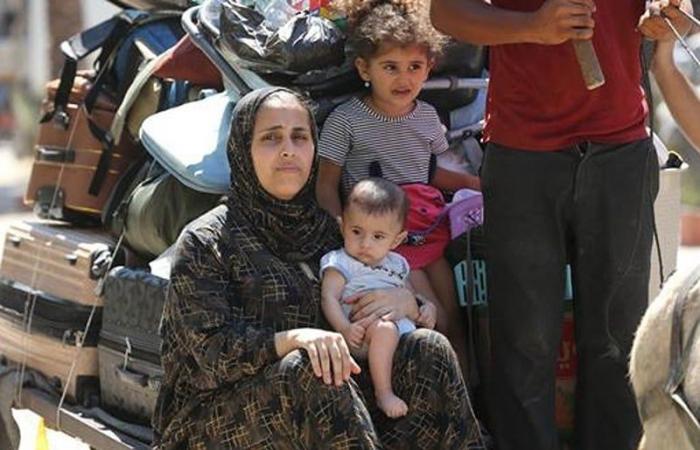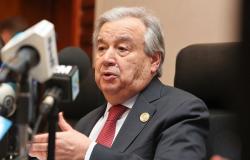As the war continues into its second year, the number of premature births and maternal deaths is increasing further, making the already “catastrophic” humanitarian situation even more alarming.
According to the United Nations Agency for Sexual and Reproductive Health (UNFPA), many women are forced to give birth without access to medical support.
Sexual and reproductive health care, including family planning and postnatal care services, became severely restricted for 155,000 pregnant and lactating women. These women find themselves exposed to major health risks in the absence of adequate prenatal and postnatal care.
Reports of complicated and high-risk pregnancies, associated with adverse outcomes, have increased significantly, while access to safe delivery services has declined sharply, particularly in the North. In addition, transport difficulties and the shortage of medical personnel further exacerbate this crisis.
In addition, women and girls face increased threats due to overcrowding in shelters and insufficient health infrastructure. Infections are spreading, affecting 25% of women, who suffer from skin problems and other health conditions.
Menstrual hygiene has become almost impossible to manage, as more than 690,000 menstruating women no longer have access to basic sanitation supplies. The cost of essential items, such as soap, has soared by 1,100%, making hygiene unaffordable and increasing women’s vulnerability to violence and exploitation.
This UNFPA alert comes as around 70% of Gaza’s infrastructure is destroyed, depriving virtually the entire population of food, drinking water, health care and basic shelter. Gaza’s health system is on the verge of collapse, with half of the hospitals out of service.
In the 17 hospitals still operational, only minimal services, including maternity care, are available due to a lack of essential resources. In northern Gaza, only two of 20 health points and two hospitals, Kamal Adwan and Al Awda, which provide emergency obstetric care, are still partially functioning, struggling to survive without supplies, fuel, food or water.
« This situation will further restrict access to maternal health care for around 14,000 pregnant and lactating women in northern Gaza. “, underlined the agency, which notes that its supplies have been stuck for months in trucks at the border or stored in warehouses in Egypt and Amman, while the women and girls of Gaza urgently need them.
Supplies include 900 inter-agency reproductive health kits with essential medicines for safe deliveries and emergency obstetric care, 51 high-performance tents for safe spaces and medical points, generators, ultrasound machines, patient monitors, 60,000 hygiene and dignity kits, 6,400 postpartum kits, and more than 1.2 million sanitary napkins.
For its part, the World Health Organization (WHO) specifies that more than 100 patients, including children, suffering from trauma and chronic illnesses will be evacuated from Gaza tomorrow Wednesday, as part of a rare transfer outside the enclave ravaged by war.
Those prioritized by the Gaza Ministry of Health will be gathered at the European Hospital in Gaza this Thursday, with the help of the WHO. They will travel in convoy via the Karem Abu Salem crossing point (Kerem Shalom in Israel) before flying to the United Arab Emirates, then some to Romania. According to the WHO, another 12,000 people are still waiting to be transferred.
Furthermore, the WHO indicates that it was able to reach Kamal Adwan hospital on Sunday, November 3. Despite the “dire” conditions, the team managed to transfer 25 patients and 37 attendants to Al-Shifa Hospital. It was also able to deliver medical and surgical equipment for 7,000 interventions, 150 units of blood, 20,000 liters of fuel, food and water.
At Al Awda hospital, a mission carried out last Sunday made it possible to transfer 5 patients and 5 caregivers to Al-Shifa hospital, leaving 39 patients there. The WHO team noted the absence of fuel at the hospital, with the generator operating only 3 hours a day until November 3, making any surgical intervention impossible.
Regarding the polio vaccination campaign in northern Gaza, more than 105,000 children under ten years old (88% of the target) were vaccinated between November 2 and 4, and nearly 84,000 received a dose of vitamin A.
WHO has partially extended the campaign until Tuesday, November 5, in four health centers in crowded areas, including Shujayyia Muscat Center, Alrahma, Sheikh Ridwan and Alshati Service Center, facilitated by humanitarian breaks. The polio technical committee should evaluate coverage to determine the need for further extension. The campaign aims to vaccinate 119,000 children, a goal complicated by current conditions requiring at least 90% vaccination coverage to stop poliovirus transmission.
For its part, the UN Office for the Coordination of Humanitarian Affairs (OCHA) reports a continued reduction in humanitarian supplies entering the Gaza Strip, already limited since October. Private imports are virtually banned, and Israel only allows three entry points: Kerem Shalom, Gate 96 near Deir al-Balah, and Erez West.
Aid workers, faced with dangerous routes and often inaccessible or dangerous roads, struggle to reach these areas. Additionally, shipments arriving in Erez West can only be directed to Gaza City, with deliveries to besieged areas of the North Gaza governorate being systematically refused.






